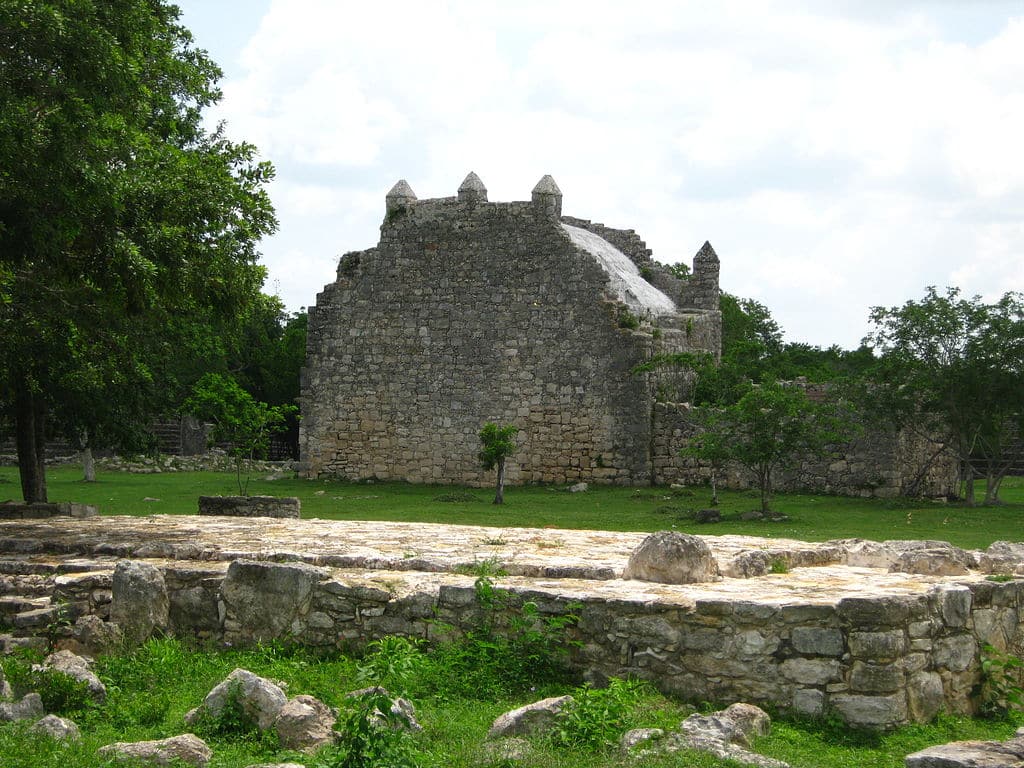Mayan and Spanish ruins in one place

Near Merida, in Yucatan, Dzibilchaltun was still a large settlement—of around 200,000 people and 8,400 buildings—when the Spanish arrived. There might be no tall pyramids here. But there’s another reason why you should visit. It’s the only site where Mayan and Spanish buildings coexisted. Only here you can find Mayan and Spanish ruins in one place.
Mayan and Spanish ruins in one place: Dzibilchaltun and the universe
A tower that sits on a pyramid base, the Temple of the Seven Dolls looks like someone began building a pyramid and changed their mind halfway through. And there was a time in which this whole building was entirely below a bigger pyramid, as was the Mayan custom. Yes, but, where are the dolls? I hear you ask. You’ll find out—keep reading.
Like other Mayan buildings, the knowledge Mayans had of the universe is displayed here—as well as their obsession with equinoxes. The Temple of the Dolls is built in such a way that the sun passes through it, but only during the spring and autumnal equinoxes, signaling the beginning and end of the harvest season.
Two worlds collide in Dzibilchaltun
As we mentioned before, this was still a busy settlement when the Spanish arrived. They took apart some of the Mayan buildings and built a 16th-century chapel, now a part of this archeological site. These are the only remains of Mayan and Spanish buildings existing at the same time.
These lines cover only a few of the things to see here—there’s a lot more.
Mayan and Spanish ruins in one place: Dzibilchaltun’s museum
Because of its historical significance, Dzibilchaltun has its own museum. This is where the dolls from the Temple of the Seven Dolls are (thought we’d forgotten, didn’t you?), along with the other objects found here. Mayan artifacts, as well as the armor and weapons of the conquistadores.
This site alone has a lot to tell about the history of the whole country.
